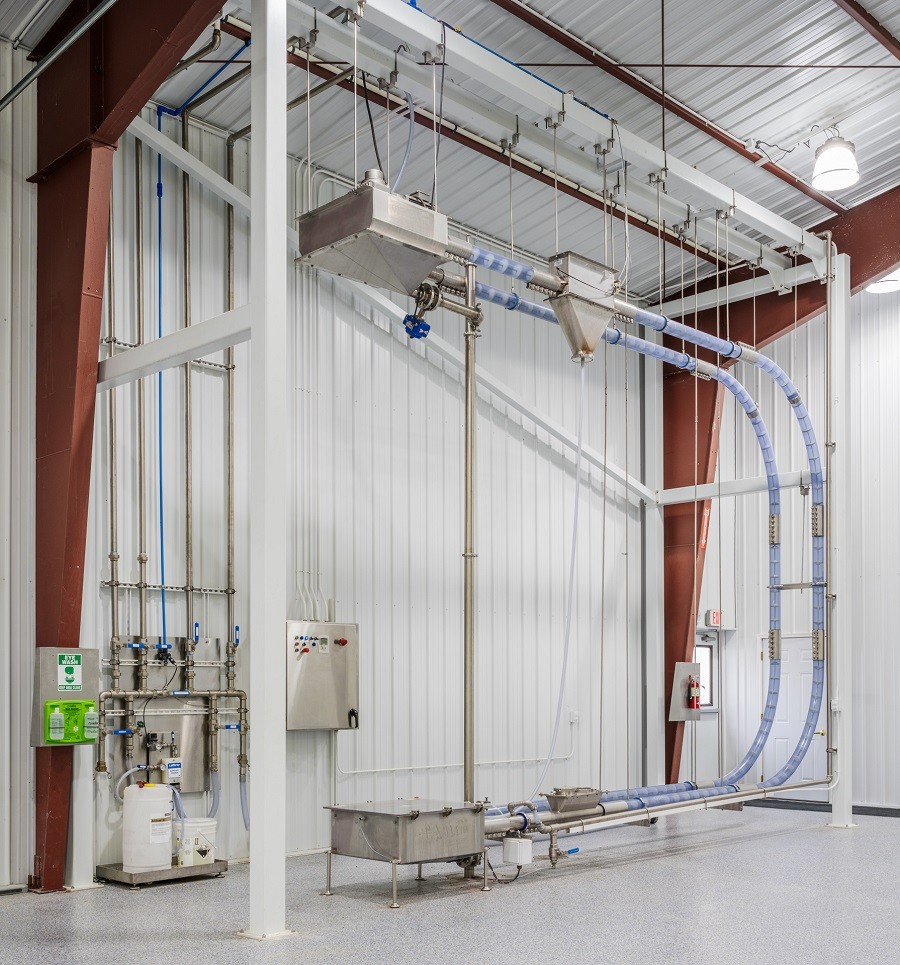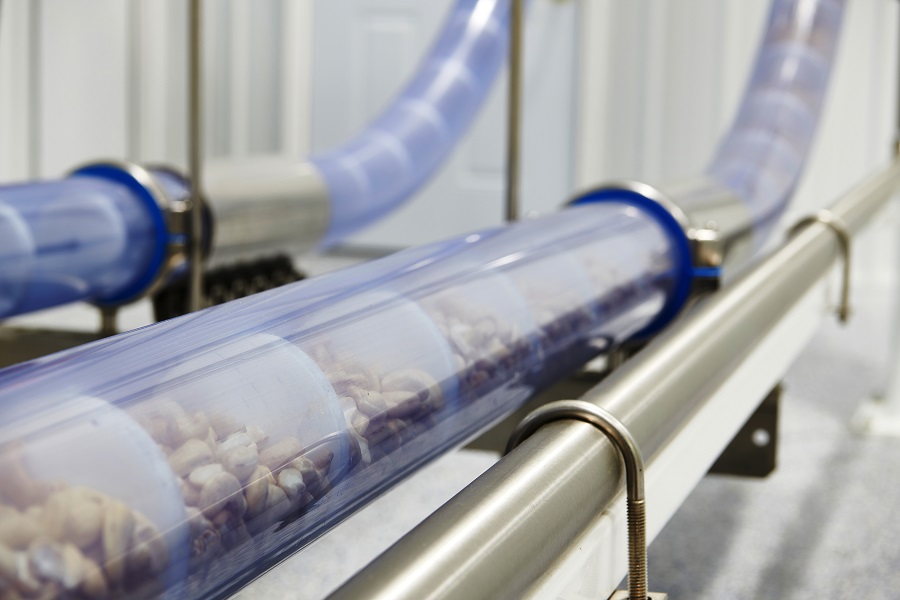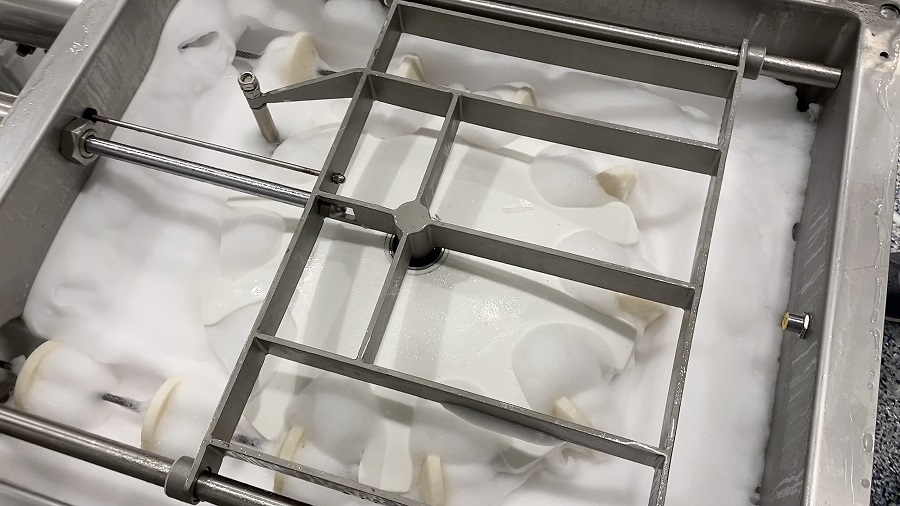With the threat of contamination from harmful pathogens such as salmonella, listeria, and E. coli a continual concern, food processors are seeking to protect not only the public but also their companies’ bottom lines from the massive costs, reputational damage, and greater regulatory scrutiny associated with recalls. The goal is a safe, clean, sanitized working environment.
Given the increasing number of outbreaks and recalls traced to post-processing contamination of foods, it is no surprise that the Preventive Controls Rule requires manufacturers to implement a food safety plan with the goal of preventing sanitation deficiencies. The rule covers sanitation practices for food-contact surfaces, preventing microbial and chemical cross-contamination, and monitoring potential environmental pathogens for critical equipment like conveyors.
As a result, quality assurance teams are paying more attention to the type and design of conveyance systems used to help meet food safety standards. This includes identifying potential harborage points where debris and pathogens can collect, as well as implementing best practices to save on costs to clean equipment, perform regular testing, and maintain the environment.

Enclosed tubular drag cable systems like those from Cablevey Conveyors are capable of automated wet cleaning, so can help mitigate risk and prevent many safety issues.
“Every day we are asked for recommendations about types and designs of conveyors,” says Justin Kerr, founder of Factor IV Solutions, LLC, a food safety consulting firm that has worked with hundreds of food processors and harvesting operations throughout North America. “With conveyors, ideally there should be minimal harborage points, they should protect products from the environment, and be easy to clean.”
Kerr says Factor IV Solutions assists food processors to develop Sanitation SOPs (SSOP: Sanitation Standard Operating Procedures) related to conveyors that include regular verification testing of food contact and non-food contact surfaces. However, given the risks of contamination, the potential for recalls, and the additional costs associated with regular cleaning and testing, it’s advisable to select a conveyor that eliminates many of the potential risk factors.

After trials and verification testing, it was found that tubular cable conveyors maintain greater repeatability cleanliness over a longer period of time than open systems due to the controlled environment within the enclosure.
Selecting a conveyor system
In the food processing industry, open conveyor systems like bucket elevators and belt conveyors can be more vulnerable to contamination. With open systems, products can be exposed to pathogens, contaminants, or moisture in the surrounding environment. Product can also spill onto the plant floor and make its way into drains. Consequently, processors that use such conveyors must maintain strict environmental controls including constant swabbing, testing, and quality assurance.
Closed conveyor systems, on the other hand, effectively seal off products from the outside environment. Even then, it is still necessary to control the environment. Although there are several types of closed systems, one popular example when conveying high-value foods is tubular drag cable conveyors. These systems gently move products that are prone to breaking or crumbling through a sealed tube using a coated, flexible stainless-steel drag cable pulled through on a loop. Solid circular discs (flights) are attached to the cable, which push the product through the tube without using air. The coated cable ensures that no debris accumulates within the strands of the cable, as the cable is totally sealed.
“An enclosed conveyor like the Cablevey provides a controlled environment that reduces the risk of exposure to contaminants and pathogens from outside the system when properly maintained,” says Kerr. “Because it is closed, it is less susceptible to aerosols and over spray from adjacent lines.”
Oskaloosa, Iowa based-Cablevey Conveyors is a specialty conveyor company that has designed, engineered, and serviced enclosed cable and disc tube conveyors for over 50 years, with installations in over 65 countries. The company’s product can be as small as powdered material or as large as whole potatoes, and is increasingly used to convey coffee, cereal, nuts, produce, pet food, and specialty foods.
“When we conducted trials and verification testing, we found that tubular cable conveyors maintain greater repeatability cleanliness over a longer period of time than open systems due to the controlled environment within the enclosure,” says Kerr.
Additionally, Kerr notes that closed conveyors significantly reduce potential harborage points for contamination. “Tubular drag cable conveyors are very simple in construction, without standard joints, threaded bolts, and plastic-to-metal connections,” says Kerr.
Superior cleaning
Kerr points out another advantage: the enclosed conveyors also enable a “wet cleaning” process without wetting the surrounding areas, in which the systems can be quickly and effectively flooded with water and sanitized without disassembly.
While not all food processing materials are suited to wet cleaning, such as hygroscopic materials that readily absorb and retain moisture, the process minimizes potential contamination for other types of food. The wet cleaning procedure begins with a water rinse followed by foaming agent, a sanitizing rinse, and a final water rinse. Once the system is thoroughly flushed out, drying is achieved by attaching urethane wipers to the tubular conveyor’s discs, which act like a “squeegee” to remove any residual water.

A tubular drag cable conveyor also enables a “wet cleaning” process without wetting the surrounding areas, so the systems can be quickly and effectively flooded with water and sanitized without disassembly.
“Within the tubular system, all wash factors can be repeatably controlled – water chemistry, temperature, physical action, and time – so every surface is equally cleaned,” says Kerr. He notes that clear tubes are available that offer the additional benefit of visual inspection or verification.
Since a complete and thorough cleaning can be accomplished without disassembly of the system, the entire process only takes 20-90 minutes, depending upon the layout, product, and desired level of cleanliness. This can substantially reduce disruptions and downtime during production changeovers and eliminate the need for additional dedicated conveyor lines. Regular cleaning can be automated through the plant’s distributed control system.
“A benefit of Cablevey is the repeatability and verification of surfaces cleaned and the ease of maintaining them,” says Kerr. “You can do verifications against cleanliness and hold [the cleanliness] over a greater period of time.”
When a food processor wants to ensure that a conveyor will meet its sanitation requirements, equipment suppliers like Cablevey often allow quality assurance teams to perform tests prior to purchase.
“Sometimes customers come to our test lab so they can run product and conduct swab tests before and after wet cleaning and review the results for themselves,” says Morgan Bailey, Communication Specialist at Cablevey Conveyors.
In the food processing industry, the stakes are high when it comes to preventing safety issues. With the threat of contamination from harmful pathogens always a concern, processors are seeking to protect both the public and their companies’ bottom lines from the massive costs associated with recalls. As a result, quality assurance teams are analyzing the type and design of conveyance systems more closely.
Enclosed conveyors that are capable of automated wet cleaning can help mitigate risk and prevent many safety issues. These conveyors provide an extra level of protection by keeping debris and pathogens from collecting. They also save on costs by eliminating the need for manual cleaning. As processors continue to seek ways to improve safety, enclosed conveyors will become an increasingly popular choice.














